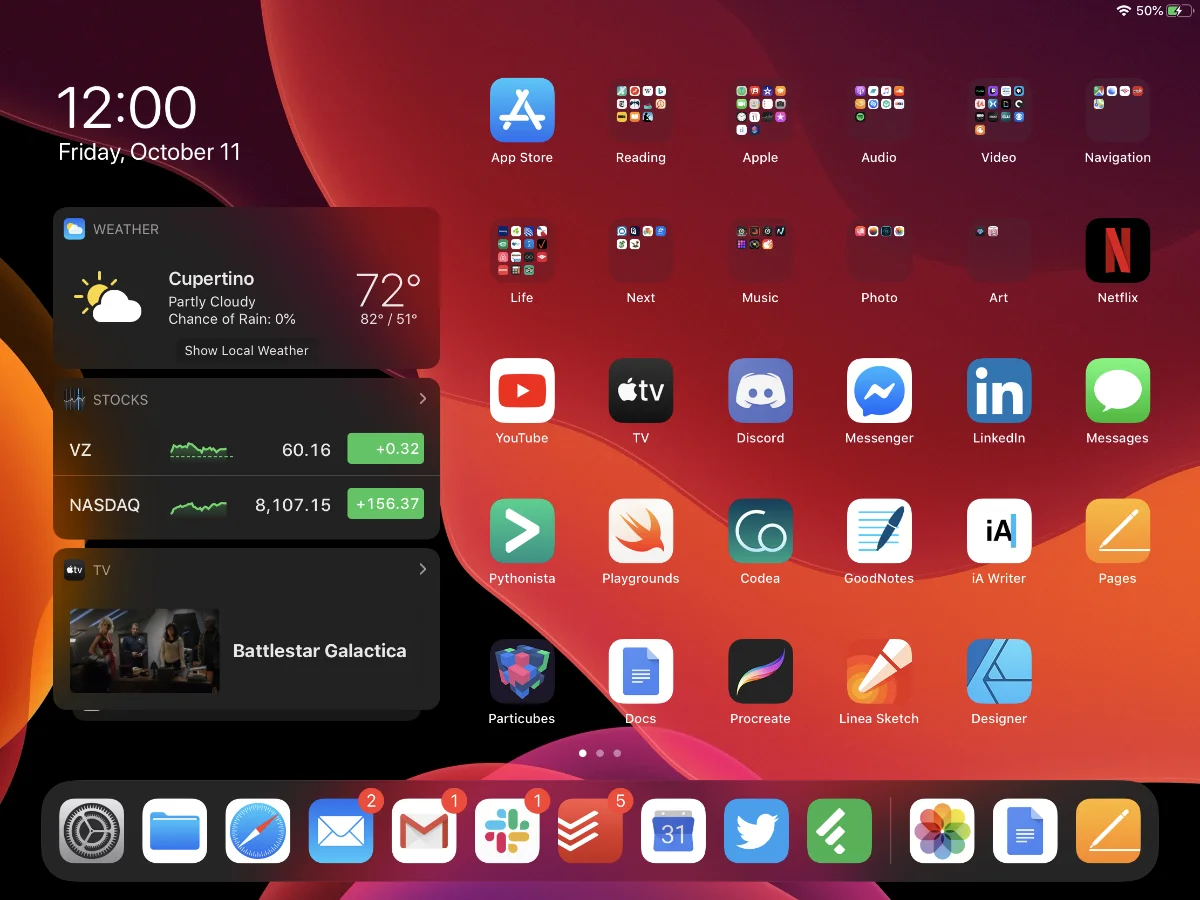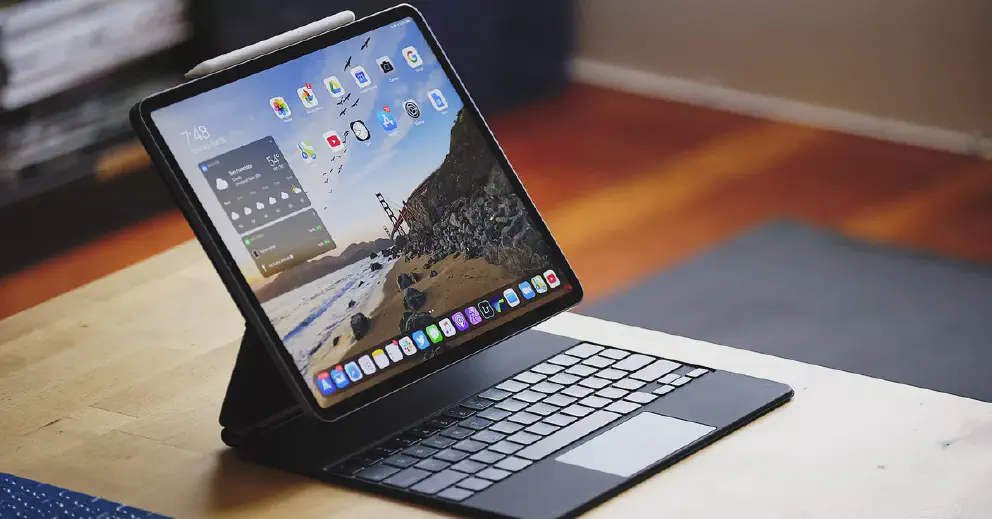Back in 1983 Steve Job was giving a speech at Center for Design Innovation. Back then, Apple has just released Lisa and working on an all-in-one which later be the Macintosh. He had a vision of what the computers of the future will be:-
Apple’s strategy is really simple. What we want to do is we want to put an incredibly great computer in a book that you can carry around with you and learn how to use in 20 minutes. That’s what we want to do and we want to do it this decade,” … “And we really want to do it with a radio link in it so you don’t have to hook up to anything and you’re in communication with all of these larger databases and other computers.
So after working on it for a few decades, Apple finally release the first iPad on stage in a press conference in San Fransisco on 2010. Just like the iPhone, it was easy to use, it got Wi-Fi and 2G modem. It was cumulation of over 25 years of work, progress and development.
Now Apple sold around $20 billion worth of iPads each year. If the iPad was its own company, the iPad would be a Fortune 200 company in America. One of the top 200 largest company in USA. Which is an amazing feat.
First Release: Oversized iPhone
The first iPad had a 9.7" touch screen. It runs on a variant of iOS. One of the firsts for Apple in the iPad is it is the first chip made by Apple, the A4, which later evolved into the M1 that powers the Macs of today.
One of the software feature of the iPad is the apps is built for the iPad itself and Apple provide a platform to develop software specifically for the iPad. Instead of just enlarging the iPhone, Apple designed the iPad to be it’s own variant.
Here is the first reviews of the iPad:-
- Engadget: akward to hold, limited multi-tasking capability, no phsyical keyboard. “ipod on steriod” - link
- MacWorld: 4/5 stars: Solid build, apps are good. Music could be better - link
- Arstechnica: Great potential, but flawed, but fixable on the software - link
One thing to note that the iPad is significally more expensive than it was today. Launch price for $500 in 2010 dollars which is $604 today. Now, you can get an iPad as low as $329 and have dozens of improvements over the design.
The Mini
Despite it’s early review of the iPad, the iPad quickly become a great seller and outstrip Mac sale by 1-2 years after its first launch. The iPad basically create another leg in Apple stool for financial stability.
With the rise of eBook readers like Kindle, Apple raise to the competition with the introduction of the iPad Mini. It featured a smaller screen of 7.9" instead of the standard 9.7" and also one of the first iPad to feature the new lighting connector. Because of the cheap price and simple design, it sell very quickly.
The Air: The lighter gets lighter
As the MacBook Air is the Ultrabook version of the Mac, the iPad Air was the ultrabook version of the iPad. It is the lighter, more compact version of the normal iPad, but it was as powerful as the normal iPad. The first iPad Air featured the A8X process, which was then a modified version of the chip that powers the iPhone 6. This also show that Apple has begin to make variants of the A-series chip which later lead to other innovations like the S-series chip for watches and M-series chip for the Mac.
The Pro: Taking the iPad to new heights

While iPad has establish itself as a very good casual computing platform, which mean it is very great for consuming content like videos, listening to music or reading articles on the internet, Apple wanted the extend the iPad platform by adding more productivity features on the iPad.
Enter the iPad Pro. It was Apple attempt to reintroduce the iPad as a viable laptop replacement platform where you can do work instead of merely use it for relaxation. The Pro comes in who version, the enlarge 10.5" and a giant 12.9" which squarely compete with 13" laptops.
One of the features that separate the Pro from the normal iPad is it was designed with keyboard and a stylus from the start. Smart Connector is located at the back of the iPad which allows the iPad to connect with a keyboard. Apple also introduced the first active stylus by them, the Apple Pencil. While stylus is not required to perform tasks in iOS, the Apple Pencil added another dimension of output. It is highly praise by designers but the major complaints was the weird way that it needs charging and it easily rolls off (something that i can attest).
Despite the introduction of the new form factor, the major complaint that was received that the iPads are getting more and more powerful, but it is neutered by the underlying iOS which limited its ability.
iPadOS: Making the iPad more laptopy

One of the major complaints of the iPad is the iOS on iPad feels too much like iOS on iPhone. There is not much differential factor and most of the interface was created around phones, not tablets. So on June 2019, the iOS was reintroduced as iPadOS 13. The iPadOS will be a fork of the iOS which more emphasis and focus on the tablet environment. While the code base is the same with iOS, the iPadOS comes with more features that take advantage of the more powerful setup that the iPad can afford.
It has a new windowing system that is specific for the iPad, took more advantage of keyboard shortcuts which the iPad could comes with and allows for more integrated development approach with macOS and iPadOS. Catalyst is a feature where an app could be developed for both the iPadOS and macOS which help integrated two potential code base into a single one.
The iPad Pro is also updated. Instead of using a lighting port like all other iPads, the new 3rd generation iPad Pro features a USB-C which enables it to connect to more devices like an external monitor, printer and hard drive. Apple also release a new Pencil design that addresses all the complaints of the first Apple Pencil.
A clever ad showing all the changes made on the iPad Pro 3Later, Apple also introduce a new set of keyboards and one of them the magic keyboard also features a mousepad which is a first for iPad. Mouse support has been reworked and the iPadOS acts closer as a laptop and it ever been.
Where are we now
The current lineup which consist of the iPad Mini and iPad for the low end, the iPad Air for the power user on a budget and the iPad Pro for the laptop replacement potential, it is currently the stronger line up that Apple ever put up.
However, there are some chinks in Apple’s armor. The iPad Pro while powerful and capable, it still no good enough to be a laptop replacement due to the high asking price. While iPadOS is indeed more powerful than ever, the complaints that it is still a crippled version of the powerful macOS. Apple tight grip on the user experience has limited what users can do with the iPadOS.
The future

While the iPad has grown much, much more than the original days of a content consumer device in 2010, there is still much room to grow. Rumors are swirling around that the M1 chip, that is currently fanless in the MacBook Air form will be going to the iPad Pro. Putting the M1 will definitely put the iPad Pro one of the most powerful tablet in the world, although the iPadOS will be the limiting factor
Another rumor has that Apple has been working on putting Apple’s own pro software like Final Cut Pro, Logic and Compressor on the iPad. This is plausible since there are 3rd party solution to this and the iPad Pro is capable to do 4K video editing with ease.
With catalyst and M-series chip, porting iPadOS apps into macOS has never been easier. The future will be more developers and game studios will port their apps and games both the iPadOS and the macOS.
Plug
Help grow this site and my family by visiting my affiliate links below:-
- iPad Pro 12.9" - Buy at Amazon
- iPad Pro 11" - Buy at Amazon
- iPad Air 10.9" - Buy at Amazon
- iPad 10.2" - Buy at Amazon
- iPad Mini 7.9" - Buy at Amazon
Accessories:-
